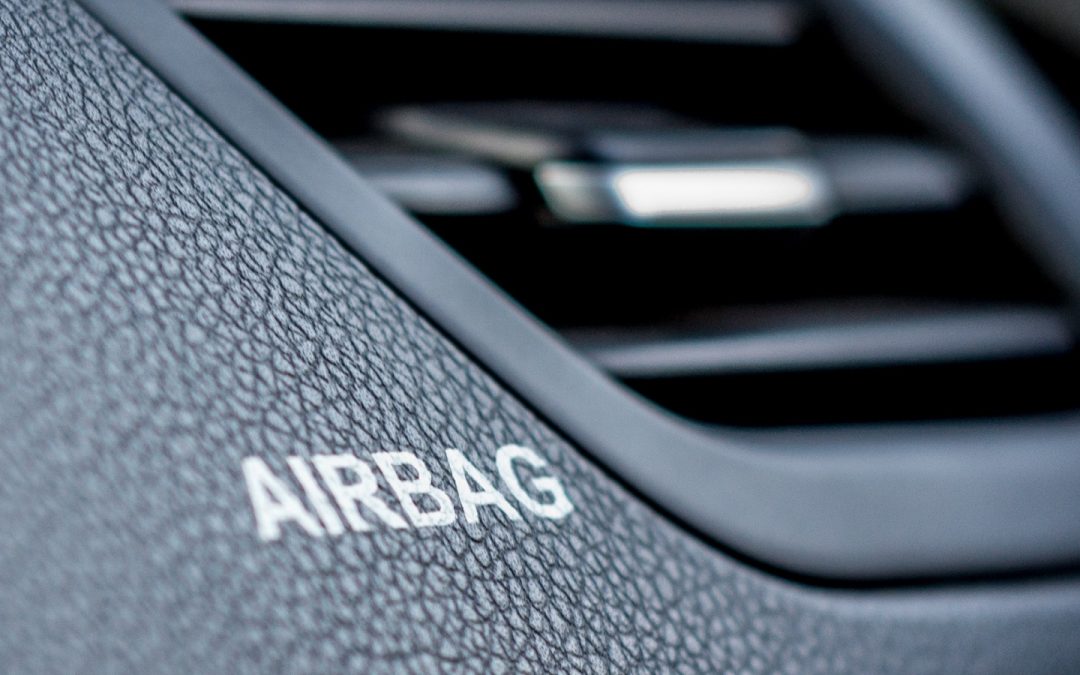Airbags were invented in the early 1950s to protect drivers and front-seat passengers from hurting themselves on the dashboard and the steering wheel in the case of a collision. However, it wasn’t until 1968 that a critical component was incorporated into the design: sensors that would detect a crash and automatically deploy the airbags. Car safety was on the public’s mind at that time, with Lyndon Johnson declaring in 1966 that more Americans had died in car accidents in the twentieth century than “…in all our wars”.
The airbag safety innovation finally began to roll out in 1972, first by the Ford Corporation. However, the industry needed to be convinced that airbags worked. After first incorporating airbags, for example, General Motors discontinued them in 1977. It wasn’t until 1986 that airbags were included as a standard feature of cars, and, finally, in 1998, Congress made their use a legal requirement. Since they were introduced, it’s estimated that airbags have saved over fifty thousand lives.
How do airbags work?
Airbags inflate when sensors detect a collision with strong enough force to trigger the deployment. The threshold is equivalent to crashing into a wall at 13 to 23 kilometres per hour. These may seem like slow speeds but crashes at those speeds have severely injured or killed drivers and front-seat passengers.
These bags protect your head and neck from impact with the steering wheel and dash in a front-end accident. Front airbags are not designed to deploy in a rear-end or side-impact accident. Airbags are often deployed when a car hits a standing object, like a tree or a wall.
How quickly do airbags deploy?
Because an airbag protects best when fully inflated, it needs to be deployed before the driver’s head moves six inches in response to the accident, which takes about 50 milliseconds. That means the decision to release the airbags must be made in the first 20 milliseconds of impact because it takes 30 milliseconds to inflate the bags. Most crashes take about 150 milliseconds to complete, so a critical decision is made before 15 percent of the crash has occurred, and that means, sometimes, the bags deploy before they should.
Side deploying airbags
Because there is so little room between the driver or passenger’s head and the door and window in the case of a side impact, these bags are deployed at a shallow impact threshold of eight miles per hour and deploy in as little as ten milliseconds. They are the only barrier between the driver or passenger and the impacting vehicle.
Rollover airbags
Sensors can detect whether a vehicle will roll and deploy curtain airbags for protection. These airbags deploy just as quickly but are designed to remain inflated for about ten seconds to protect the passengers in the event of multiple rollovers.
Can airbags smother the driver?
After the initial cushioning of impact, airbags deflate because they have side vents for the air to escape; so, they can’t smother the driver or passenger as has been suggested. Often we see a discharge as the bags deploy. This isn’t smoke or hazardous, but the talcum powder used to keep the bags dry while in storage.
Effects of airbags
Front airbags have reduced driver deaths by 29 percent and passengers (thirteen and older) by 32 percent. Coupled with an adequately worn lap and shoulder belt, airbags reduce the mortality in front crashes by 61 percent. Side airbags have saved over two thousand lives. Side airbags minimize driver mortality in driver-side crashes by 37 percent and SUV driver risk by 52 percent.
After a collision that includes airbag deployment
If you’ve been in an accident where airbags are deployed, contact Simplicity Car Care to get your car repaired (including auto glass repair). Car glass repair is often a specialty stop, but Simplicity Car Care will do the whole collision repair job and get you back onto the road where you belong. Contact Simplicity Car Care today.


Recent Comments